By Marc Cammack
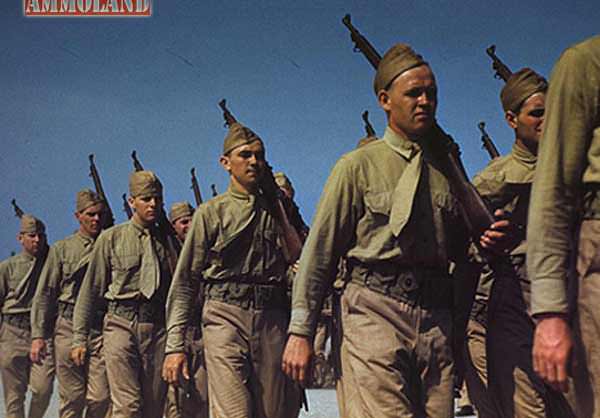

Bangor, Maine – -(Ammoland.com)- The 1903 Springfield family of rifles is one of the most popular military arms today.
In a Part 1 of my Springfield Rifle Series we looked at the rifle’s early history through the end of World War One.
In this article of the Springfield Rifle Series we will look at the rifle’s production after World War One, and production through World War Two including the 1903A3. We will also look at sniper variations, .22 caliber variations, and other types of 1903 rifles including target and sporter models.
Post WW1 Production
Production of the 1903 rifle continued after the end of World War One. Rock Island produced the weapon until 1919, and they had manufactured a total of 346,000 rifles. A small number of Rock Island 1903 receivers were completed at Springfield Armory in 1928 with Springfield barrels. Springfield Armory’s production of the 1903 continued much longer than Rock Island, as they produced rifles until 1939, with about 1,340,000 being produced.

In 1929 a new stock was introduced for the 1903 rifles, called the “C” stock or pistol gripped stock. Rifles fitted with this pistol grip were designated the M1903A1, and they were produced from 1929 until the end of Springfield’s production in 1939. The semi automatic M1 Garand had been officially adopted by the US Army in 1936, but the rifle required some time to get early production problems fixed, and the 1903 Springfield still saw widespread service.
.22 Caliber Springfields
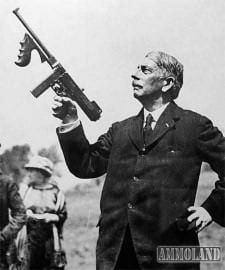
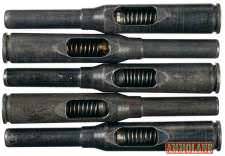
A few variations of the 1903 Springfield were chambered in .22 LR for training purposes.
Two Ordnance officers Jay Hoffer and John Thompson (Designer of the Thompson submachine gun) invented a 1903 .22 rifle that had the same weight and feel of the regular 1903 service rifle. This rifle used steel adapters that duplicated .30-06 ammunition, and housed the .22 caliber rounds. These adapters also could be put in stripper clips to duplicate proper loading procedure.
Production of the Hoffer-Thompson .22 rifle started in 1907 and ended in 1919, with 15,525 rifles being produced. Today these rifles are scarce, as many were destroyed or converted to regular 1903 .30-06 rifles.
Problems with earlier .22 1903 rifles accuracy led to the development of the Model 1922 practice rifle. The Model 1922 looked more like a sporting rifle than a military rifle. It lacked a hand guard and had a pistol gripped stock. It also had a Lyman 48B peep rear sight instead of the M1905 open rear sight.
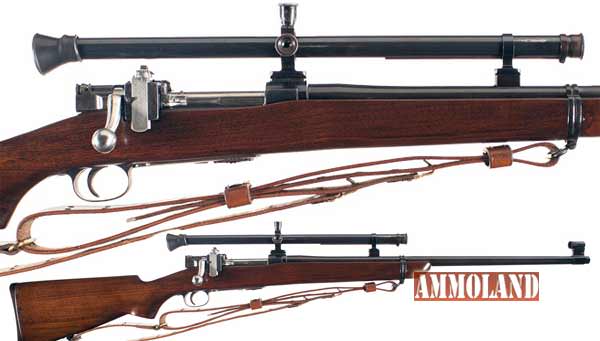
A total of 2,020 M1922 rifles were made between 1922 and 1924. The M1922 was modified with a slightly different stock and magazine floorplate, and this rifle was called the M1922M1. 20,010 M1922M1s were produced between 1925 and 1933. Another variation of the M1922 called the M1922M2 was produced between 1933 and 1942 with 11,171 being produced. The M1922M2 featured an improved bolt design, and a different stock. These M1922 variations were available for sale to the general public through the NRA via mail order.
National Match and Sporter Rifles
The 1903 Springfield’s role as a combat rifle was only part of the rifle’s story. In the 1920’s civilians were able to purchase special target, and sporting versions of the 1903 through the Director of Civilian Marksmanship or DCM. One variant of these DCM rifles was called the NRA Sporter, which had a pistol gripped stock, Lyman No. 48 Sight, and star gauged barrel. The 1903 was used quite a bit as a National Match rifle with 28,907 being made between 1921 until 1940. These rifles were famous for their use and accuracy at the Camp Perry matches in Ohio.
World War Two and the 1903A3
The outbreak of World War Two saw production start again of the 1903 rifle, despite it being officially replaced by the semi automatic M1 Garand. Remington rather than Springfield Armory, produced the rifle. Prior to Pearl Harbor, Remington had entered into a contract to produce 500,000 1903s in .303 British for the British government. Remington did not completely go through with the contract, and as a result the rifles were produced but in .30-06 rather than .303 British. Some rifles did go to Britain but not nearly the full 500,000 that was in the early contract.
Remington produced 1903 rifles for the US government as well in larger numbers. Remington had received older manufacturing equipment and tooling from Rock Island Arsenal to build these rifles.
Unlike earlier rifles, the Remington 1903’s had many shortcuts in manufacturing to save time and money. Some Remington 1903s stocks lacked the grasping grooves of earlier rifles. About 348,000 Remington 1903 rifles were produced. Further changes were made to Remington’s 1903, including the complete elimination of grasping grooves on the rifles stock, and most importantly a rear peep sight instead of the older open M1905 sight.
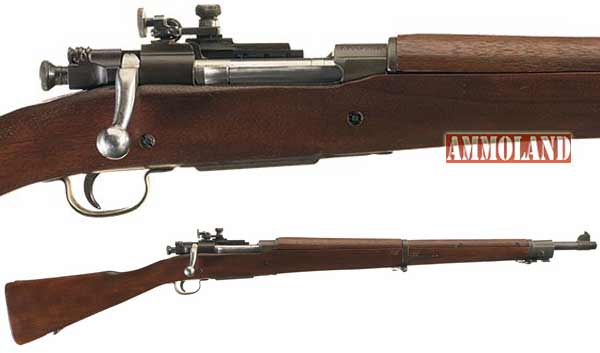
These changes mentioned above resulted in the 1903A3 rifle, which was produced by Remington and the Smith Corona type writer company. Production of the 1903A3 began in late 1942 and ended in February of 1944. Remington produced over 707,000 rifles compared to 234,000 by Smith Corona. Despite the manufacturing shortcuts, the 1903A3 had was a strong and safe weapon due to the fact that the receiver was made out of nickel steel. The rifles saw use during World War Two in all theaters of war. Military police used the weapon, and the rifle also served as a grenade launching platform. 1903A3s were supplied to other Allied nations during World War Two, such as the Nationalist Chinese.
Older 1903 rifles were refurbished and rebarreled for use during World War Two. World War Two era barrels were made by Springfield Armory, High Standard, and R.F. Sedgely (R.F. Sedgley military barrels were marked USMC for Marine Corps use). 1903 rifles were pressed into service and used throughout the war. Because the Marine Corps was slow to adopt the M1 Garand in number, many Marines in the early part of World War Two were equipped with 1903 rifles, most famously during the Battle of Guadalcanal.
Sniper Rifles
The 1903 Springfield was used as a sniper rifle with a few different variants. The sniper versions used in World War had scopes made by Warner and Swasey. There were two models the 1908, and 1913 “Musket” sight scopes used on World War 1903 sniper rifles. These scopes were mounted on left side of the rifle via a mounting bracket. At least 5,000 of the Model 1913 scopes were used during the World War One.
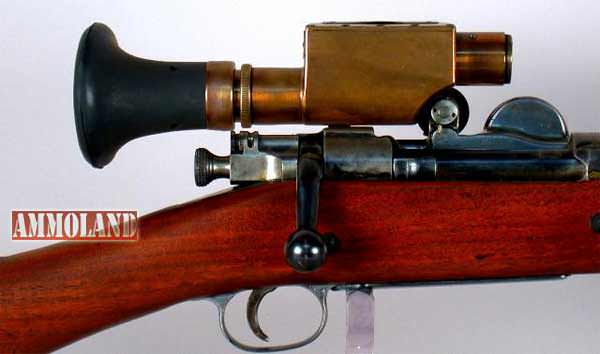
Prior to World War Two the Marine Corps had developed a new model of 1903 sniper rifle. This was the Model 1903A1 sniper rifle and it had an 8x power Unertl scope. The 1903A1 Sniper rifles also had Star Gauged barrels to ensure the best accuracy. The Marine Corps used these rifles in both World War Two and during the Korean War to great effect.
Perhaps the most famous sniper variant of the 1903 rifle was the 1903A4 . It was the sniper rifle carried by Barry Pepper in the movie Saving Private Ryan, and it was based on the 1903A3 rifle. Remington began production of this sniper rifle in 1943 and unlike the regular 1903A3 it lacked both a front and rear sight. Also the gun was still marked “03-A3” but these markings were offset so they could be seen with the scope on. The 1903A4 was fitted with either a Lyman Alaskan 2.5x power scope or Weaver 330C 2.2x power scope. Some 1903A4s were fitted with M84 scopes after World War Two. Production of the 1903A4 ceased after June, 1944 with a total of 23,365 rifles being produced. The 1903A4 was used by the Army and saw use in World War Two, Korea, and Vietnam.
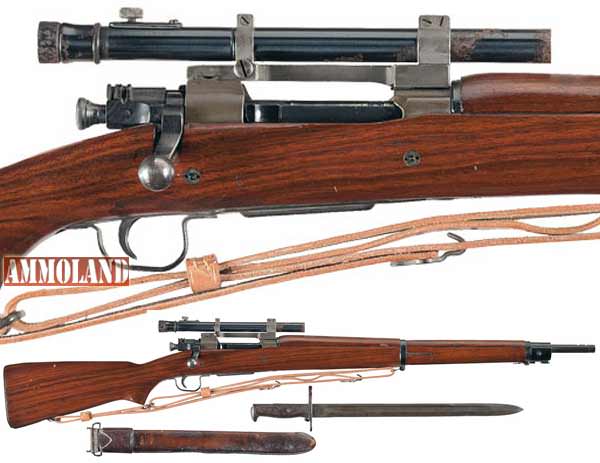
After World War Two many 1903 and 1903A3 rifles were sold off for surplus through the DCM and the NRA for cheap via mail order. Many of these rifles were modified or sporterized by hunters and shooters. Today unmodified and un-messed with 1903 rifles are in high demand and bring good money. Prices start in the 600-700 dollar range for a standard rifle and go up depending on condition, variation, and other factors.
- * Images: Rock Island Auction Company ( www.rockislandauction.com )
- ** Image: Springfield Armory National Historic Site ( https://ww2.rediscov.com/spring/spring.htm )
1903 Springfield Rifle Resources:
- The Springfield 1903 Rifles – The Book : https://goo.gl/oY3TIz
- Springfield 1903 Rifle Parts & Ammo : https://goo.gl/M7vn0T
- More Springfield Info & History at NRA Firearms Museum : https://tiny.cc/meuv1x
About Marc Cammack
Marc Cammack has been collecting firearms since he was 14 years old.
His interests are primarily military surplus firearms of the late 19th into the 1950’s. He has studied these in depth, and currently volunteers at two local museums providing them with accurate information about their firearms.
He is a graduate of the University of Maine with a bachelor’s degree in history. He has studied modern European and American history since the age of 9, and has been shooting since the age of 11. He currently resides just outside of Bangor, Maine.

I have a Springfield Armory M1922 MI? The question mark has a number or a letter there but has been drilled for scope mount. Serial Number 188?? B The stock looks like a wide match style. 22lr listed on the barrel. Can anyone help me identify this?
I think a lot of the 03-A3’s went unused at the end of the war I recently purchased one that looked like it was unused and never taken apart for a complete cleaning wish I could post a pic.
the place I purchased it from also has a sniper model a3 I in excellent condition that I would like to buy but its 3000 dollars
Good article and good comments from Rick.
JLJ
Several errors in this – mostly caused by reading old resources. 1. MANY more than 346,000 RIAs produced – nearly 100,000 more receivers.. 2. MANY more than 1.3M Springfield M1903s; the last receiver was in the 1,536,000 range. 3. The Type C stock was adopted in 1929, but relatively few produced (except NM) until the late 1930s. I admit the section on the Remington M1903 was better than the norm, except that the author gave the idea that it was going to be produced in .303 British, which it wasn’t (except for a couple of test rifles); also that “some”… Read more »
Rick, thanks for your input. Just curious what you recommend for an updated resource in regards to production numbers. I also could have worded somethings better in the Remington section in regards to grasping grooves and early British prototypes. Brophy stated on pg. 177 that Remington had intended to make an 03 type rifle for the Brits in 303 but never got past the prototype stage.
One additonal issue with the article. You show a picture of the 03A3 NM rifle. Why? It was a failure. The reason was the rear sight blocked the clip slot and did not allow for quick reloading during the timed fire portion of the shooting contest. There were very few made and only for one year. They are very highly collectable if one can find one. They must have documentation to prove provenance. Take Rick’s suggestions to heart, he knows his ’03 history.
,,,as does my friend Kent! 🙂
Marc, I realize that this is an old article and thread, but I just purchased a sporterized RIA 1903 to convert back to military configuration. The serial # is 388,9xx. I would imagine that this indicates at least that # of receivers produced?
I’m looking at a 1903A1 with receiver date 1939 with a barrel date of 1928–could this be an original combination?
Jeff